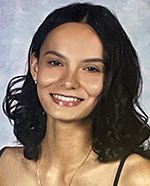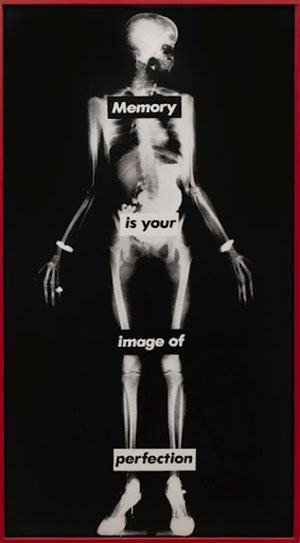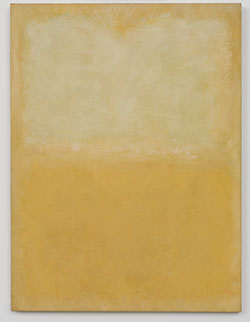By Rowanne Reifman

LA JOLLA, California — While contemporary art may have its critics, contemporary art forms such as pop art, minimalism, and expressionism help many Jewish artists express themselves. The MCASD (Museum of Contemporary Art San Diego) houses many Jewish artists’ works, such as those of Helen Frankenthaler, Mark Rothko, Barnett Newman, Louise Nevelson, Sol LeWitt, Roy Lichtenstein, Miriam Schapiro, and Barbara Kruger.
According to the MCASD Handbook of the Collection, the Museum of Contemporary Art San Diego was originally a home designed by Irving Gill and owned by philanthropist Ellen Browning Scripps until 1941, when the home was purchased by a group of community members who wanted to establish a visual arts venue in La Jolla. From the 1940s to the late 1950s, the museum exhibited local art, continually changing its programs. In 1960, the then-director of the museum declared that the museum would “devote itself to Twentieth-Century art,” identifying itself with art of the time and emerging artists. In the mid-1960s, the museum was named The La Jolla Museum of Art, however in 1971 the museum was renamed The La Jolla Museum of Contemporary Art. Many new renovations and renamings of the museum have occurred since. Today it’s called the Museum of Contemporary Art San Diego.

Modern art challenges many societal norms and ideas such as gender stereotypes, racism, colonization, imperialism, and war, often making modern art sometimes uncomfortable to look at or understand. Jewish artist Barbara Kruger for example, takes on fighting gender stereotypes, often creating art based on her experience as a woman and using expressionism as an art form. Kruger started off as a layout editor for a magazine where she gained background in making collages. Later in her artistic career she would refer to her collages as “femmages” (collages with images of women and somewhat radical statements of her time). Her image Untitled (Memory is your image of perfection), 1982 was purchased by the MCASD in 2003, however the image is currently not on display. In this image, she uses gelatin silver paint as her medium and only black, white, and red colors to make her statement pop out more to the viewer. She creates an image of an x-ray of a skeleton that appears to be a woman, as the skeleton is wearing jewelry and heels. However, if the skeleton were to remove the jewelry and heels, its gender would be undetermined, challenging stereotypes. Her message is that gender is an idea that was created socially, not something that attended our creation as humans.

Roy Lichtenstein, another Jewish artist whose art is currently on display at the MCASD, primarily used pop-art to express himself and his ideas. Similar to Andy Warhol’s famous pop-art techniques, Roy Lichtenstein often created images similar to those in comic books. In the 1970s he began to move past his cartoonish imagery but continued to work in commercial advertising. His image Mirror #4 (six panels), 1971 was a gift from Irving Blum and purchased by the museum in 1978. In this image he uses his signature Ben-Day dots. In comics, these dots are used as shading or secondary dots. Mirrors recurred throughout Lichtenstein’s compositions. From 1969 to 1972 he created more than 50 variations of the object. His style of rendering was again borrowed by cartoonists who were unable to represent mirrors literally and signified them with dashed lines. In Mirror #4, he created six different panels with dashed lines and Ben-Day dots to depict the everyday object, relying on perceptual illusion to produce an idea of the real object without really depicting recognizable imagery.

Mark Rothko, another notable Jewish artist whose work is being displayed currently in the MCASD, may seem like he painted very minimal images at first glance. However, every swatch of color was put there strategically, with the colors sometimes reflecting his own state of mind. His image Untitled, 1966 was gifted to the museum by Barbara Bloom in 2020. In this image, he uses different shades of yellow. When first looking at the painting, it may look like a singular color, but the longer you look, the more different shades you can see. In Rothko’s later career, health issues got in the way of his ability to work on large canvas so he painted with darker colors such as browns and grays. However, he was committed to using a different range of colors and continued to switch between warm and cool colors frequently.
While contemporary art may not appeal to all, it certainly has its advocates within the Jewish community, giving many Jewish people around the world a voice to say what’s on their mind and challenge everyday thought.
*
Rowanne Reifman is an entering freshman at San Diego State University with an academic interest in art history.
WHAAM! BLAM! Roy Lichtenstein and the Art of Appropriation
https://www.youtube.com/watch?v=-mO28GxR5g8
The Other Side Of Roy Lichtenstein
https://www.flickr.com/photos/deconstructing-roy-lichtenstein/